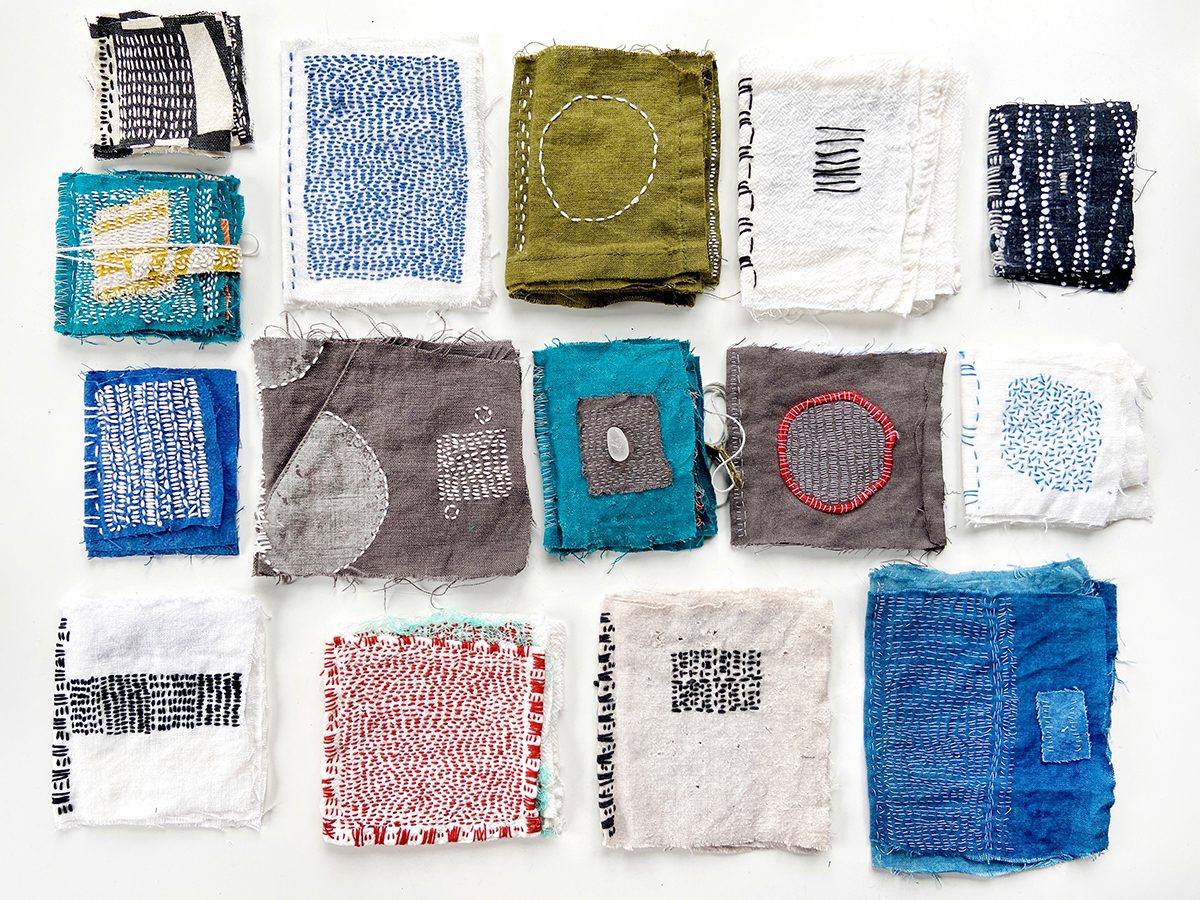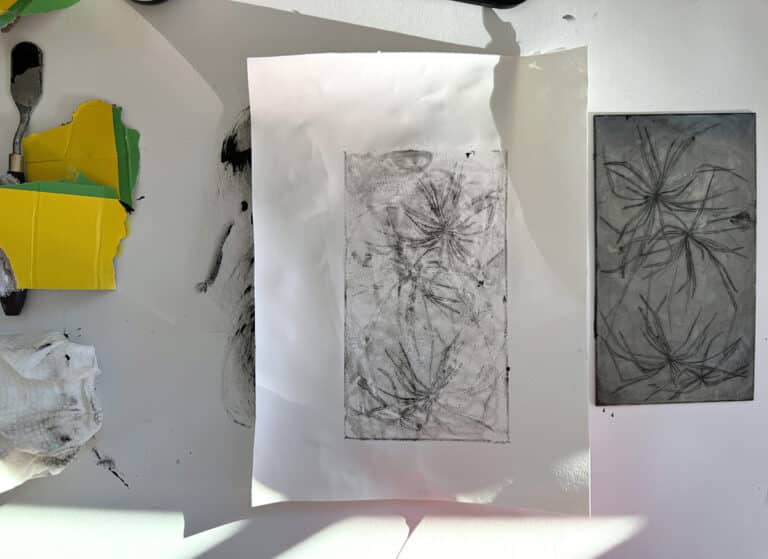Do you constantly feel busy with no hope of catching up? Do you feel discouraged because your summer break is filled with commitments instead of relaxation?
Our lives can quickly become overwhelmed with fast-paced busyness and material objects. However, pausing to observe the natural world around us offers the opportunity to discover artistic inspiration and unexpected artmaking materials.
Emma Freeman, a mixed-media artist and poet, allows her curiosity and wonder to guide the collection of natural materials in her artwork. She invites us to do the same to better serve ourselves and our students.
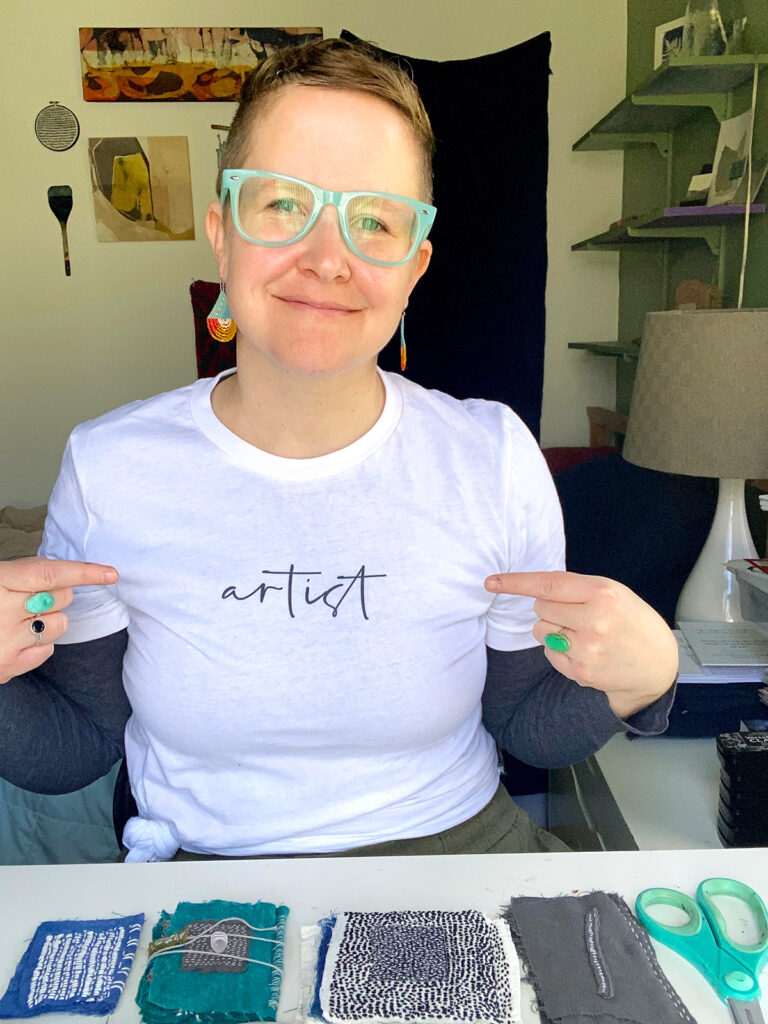
Explore these nature-infused practices for both studio and student work.
Let curiosity be your guide.
Emma creates illustrations, cyanotypes, and jewelry. She manipulates dyed teabags, woven fibers, and natural items, such as leaves, twigs, and rocks. As artists, we often limit ourselves when we identify with a specific medium as a painter or a ceramicist. However, by experimenting, playing, and following our curiosity, Emma shares, “There is so much to discover. This drive to discover has taught me over and over again that I am capable of much more than I ever thought.” In our classrooms, we can encourage students to explore possibilities. It’s crucial that we dust off our own curiosity instead of seeking quick, linear solutions to model this effectively.
Get grounded.
When was the last time your bare feet touched the grass? Some of us live in urban spaces surrounded by concrete and asphalt, while others live in wide-open spaces. Regardless of where you live, Emma suggests we all practice a simple exercise called “grounding” or “earthing.”
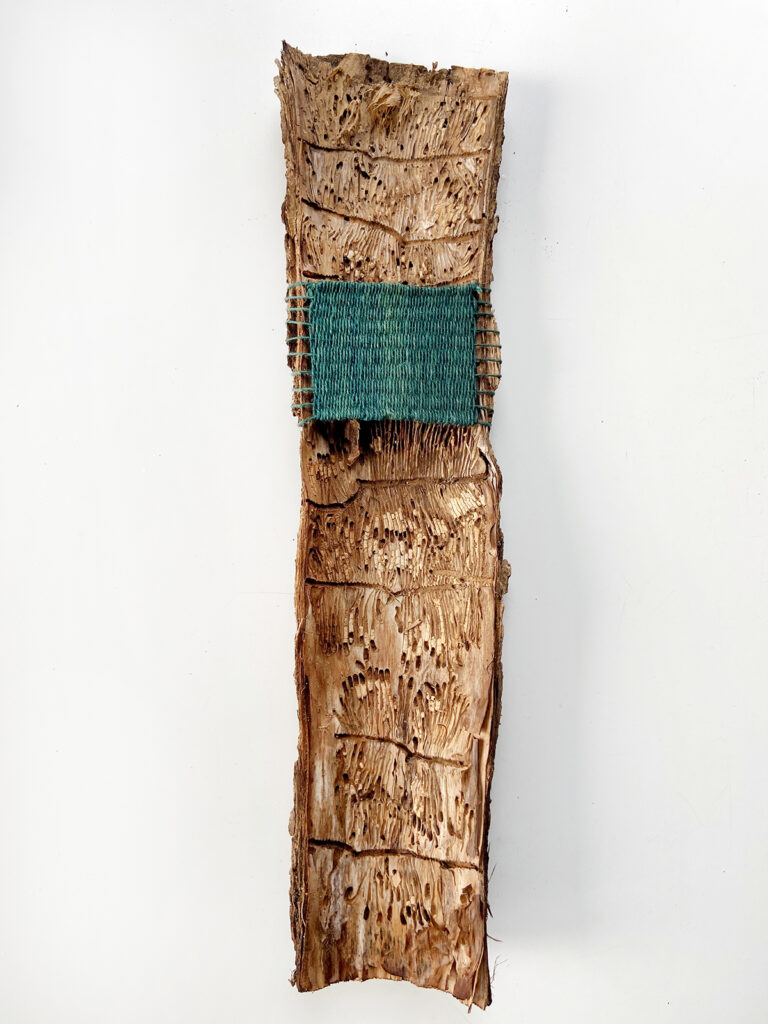
“It’s as simple as walking barefoot on the ground. It feels good and connects our bodies to the healing energy of the earth.” The activity is simple. Emma walks around her yard barefoot. She enjoys the plants and trees and collects a few finds to take back to her art table.
Practice the art of noticing.
By slowing down and reflecting on nature, we can find artistic inspiration. “I notice so many intricate, beautiful patterns, textures, and colors as I dive deeper into the natural world,” says Emma. By investigating wildflowers, tree branches, or rock formations, we can find a sense of calm as well as unique examples of the elements of art at play. Taking the time to notice what we so often rush by can inform our compositions.
Become a collaborator.
Instead of stepping outside with a preconceived artmaking concept or searching for the perfect stone, allow yourself to be inspired by what you find. In doing so, Emma reflects that this practice shifts from a focus on the product to an experiential process. Her artwork is informed by what she discovers, which cultivates spontaneity, flexibility, and creativity.
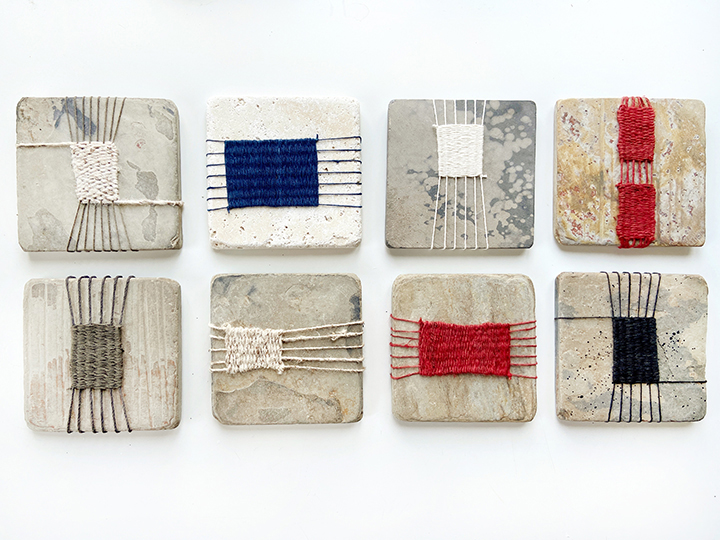
Incorporate unconventional natural objects.
Leaves, flowers, twigs—these are all items that we think of when we send ourselves or our students out to gather natural supplies for a project. But how about raindrops? Emma sets out a container to collect raindrops for watercolor painting. “I appreciate the water more because there isn’t an endless supply of it in my container. I have to consciously collect the water and notice when it’s running low. It impacts the painting experience, having that kind of deeper connection to the water on my art table.”
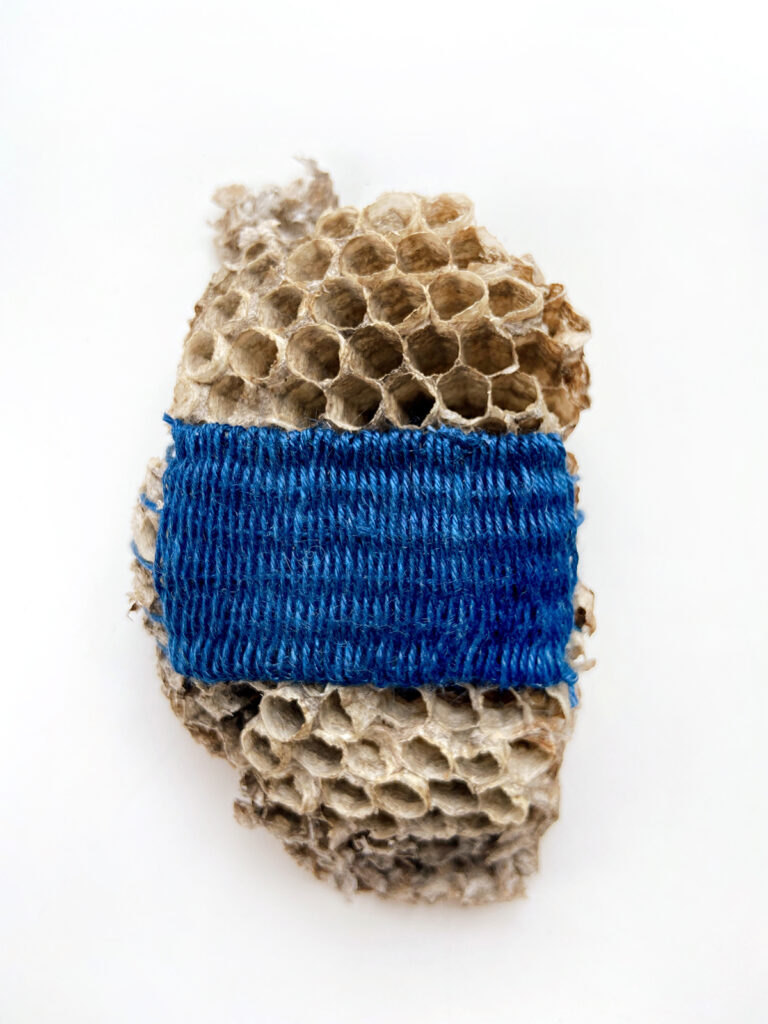
Leave nature where it belongs.
Sometimes, we shouldn’t remove pieces of nature from our surroundings. For example, most bird nests are federally protected and cannot be touched or removed from their environment. Instead of tampering with nature, we can use our experience to inform future inquiry and artmaking. Have students observe a bird’s nest and note its shape and purpose. They can use those details to create a sculptural nest out of other found natural objects, such as grasses and feathers.
Return items thoughtfully.
If natural items like leaves, feathers, and sticks are used for printmaking or paint application, clean them with mild soap after use. Return them to the outside where they belong instead of the garbage. Emma believes this cleaning process is important to practicing mindfulness and appreciation. It also honors the earth and helps complete the lifecycle of the ecosystem.
Move things around.
Young children try countless combinations as they play with blocks. A similar process of trial and error should become a regular part of artmaking. Instead of gluing items down right away, play with the materials first. This is especially important with found natural objects. Have a conversation with yourself and the items you’ve collected as you experiment with various combinations. Students can work similarly by taking photos of different compositions. Continue moving things around until the artwork feels complete.

Consider how nature responds to your art.
If you create artwork out of nontoxic materials, attach it to a clothesline or tree or bury it in the ground. Emma advocates for this practice as an authentic collaboration with the world. When the elements alter the artwork, it forces us to let go of control and perfection. It gives us a different lens, one of change or decomposition, to see beauty through.
Repurpose supplies.
There is something dreamy about new art supplies. Yet when we purchase new supplies, we often find that the novelty quickly wears off. A rewarding alternative is to practice conservation by repurposing supplies you already own. Emma creates mixed media artist books within discarded books. She reflects on the energy that exists within the pages from the author, the editor, and a former reader. Emma can intuitively respond to that energy, unlike a brand new sketchbook with blank pages that is devoid of energy and history.
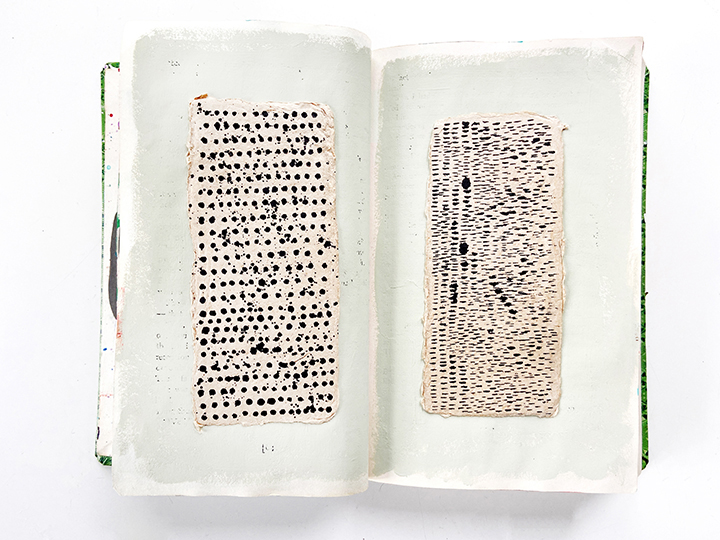
As you’re navigating your busy summer schedule, set aside a couple of minutes here and there to get grounded and notice the world around you. Rediscover your artistic process by taking a moment to reflect on how you can let your curiosity and wonder guide you. You may be surprised to find yourself slowing down as you reprioritize the creative journey with nature over the end product.
When was the last time you focused on noticing the natural world around you?
How can you incorporate Emma’s practices into your classroom?
What artmaking experiences could you display outdoors or let be changed by natural elements?
Magazine articles and podcasts are opinions of professional education contributors and do not necessarily represent the position of the Art of Education University (AOEU) or its academic offerings. Contributors use terms in the way they are most often talked about in the scope of their educational experiences.
